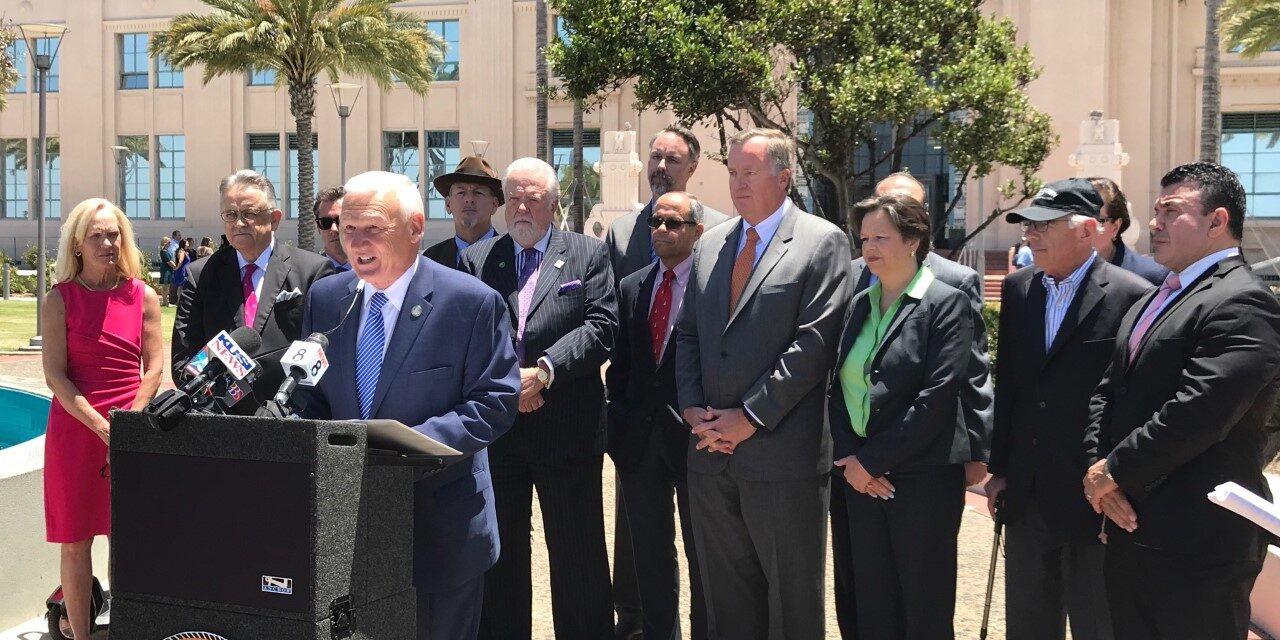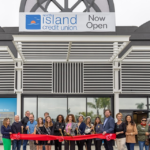
The two supervisors were joined at the press conference by a number of affordable housing advocates, including Phil Landis, Veterans Village; Paul Downey, Serving Seniors; Rick Gentry, San Diego Housing Commission; Greg Knoll, Legal Aid Society; Jennifer LeSar, LeSar Development Consultants; Dolores Diaz, Regional Task Force On Homelessness; Stephen Russell, San Diego Housing Federation; Deacon Jim Vargas, Father Joe’s Villages.
SAN DIEGO–San Diego County Supervisor Ron Roberts and Chairwoman Dianne Jacob today unveiled three bold initiatives to spur the building, renovation and acquisition of affordable housing and stem the growing tide of homelessness.
The combined initiatives – establishing a $25 million affordable housing investment pool, transferring a half million dollars from Supervisor Roberts’ Neighborhood Reinvestment account to the county’s Health and Human Services agency to underwrite affordable pre-development and planning activities, and identifying 11 county-owned properties for residential development – represent an ambitious effort to boost the stock of affordable housing.
“Clearly, what we are doing now is not keeping up with the numbers of San Diegans who are being shut out of the housing market and either pushed into homelessness or unable to climb out with existing resources,” said Supervisor Roberts, who also is chairman of the recently reorganized Regional Task Force on The Homeless. “I’m looking to jump start investment and creativity, while also encouraging elected officials in other areas of the county to look for government resources that can be used for affordable housing.”
Chairwoman Jacob said the $25 million in unallocated reserves provides a one-time investment to address affordable housing issues countywide, from El Cajon to Oceanside and Carlsbad to Ramona, with the county’s private or nonprofit sector partners owning and operating the units.
“These funds will allow us to team up with affordable housing developers to provide a hand up to those in need, not a hand out,” said Jacob. “The initiatives represent a huge investment in San Diego’s future — and for many of those who are struggling, they will help make the American Dream come true.”
San Diego is facing an affordable housing crisis, and one of its symptoms is an expanding population of homeless, including families and seniors. Social service providers and government agencies annually help thousands of people get off the street and improve their lives, but it is falling short.
This year’s annual Point In Time Count survey of homeless revealed that the number of homeless individuals in our region from a year earlier has increased 5 percent to 9,116. At the same time, the number of unsheltered homeless seniors, those 55 and older, rose to 1,598, a 20 percent increase.
“I’m especially concerned about the senior population,” said Supervisor Roberts. “One of the first projects I’d like to tackle is figuring out a way to build high-density, lower-cost affordable housing project for seniors. As California Governor Jerry Brown has said, government cannot build our way out of this situation. But we can lead by example in how we marshal our resources and work creatively with partners.”
The Board of Supervisors recently approved the development of 143 affordable senior housing units in the region, including 61 in Ramona. “What’s going on in Ramona is just a start,” Jacob said. “We have a lot of work to do across the entire county.”
The three proposals – allotting $25 million from unallocated reserves, transferring $500,000 from Supervisor Roberts’ Neighborhood Reinvestment account to the county’s Health and Human Services agency to underwrite affordable pre-development and planning activities, and designating the 11 properties as potential candidates for affordable housing – will come before the San Diego County Board of Supervisors on Tuesday, June 20. Identifying suitable county properties was first requested by Supervisor Roberts, and seconded by Supervisor Greg Cox, at the March 21, 2017, meeting of the Board of Supervisors. Shortly after, it was approved unanimously by the full board.








